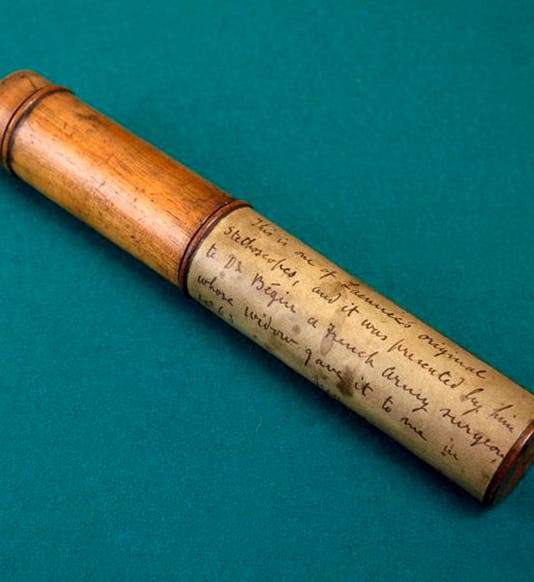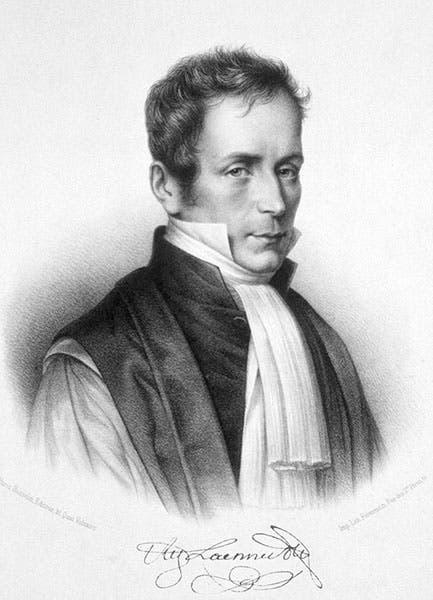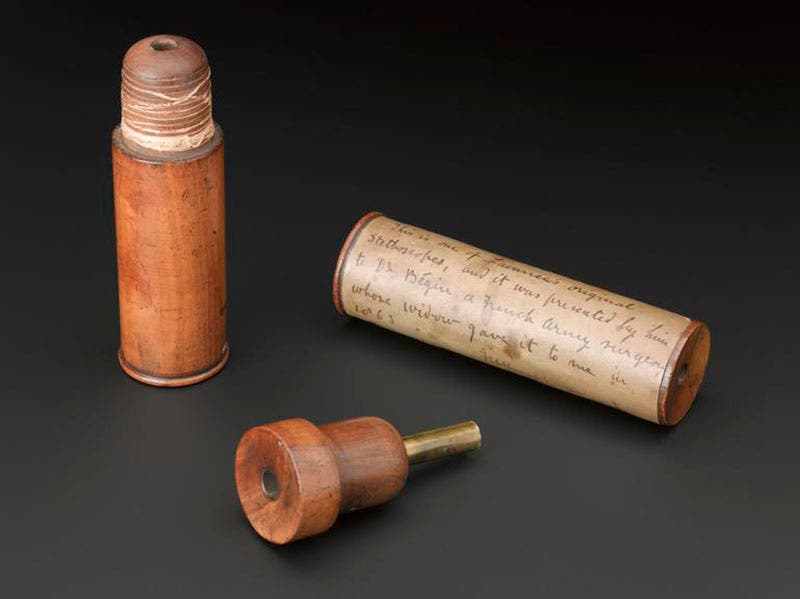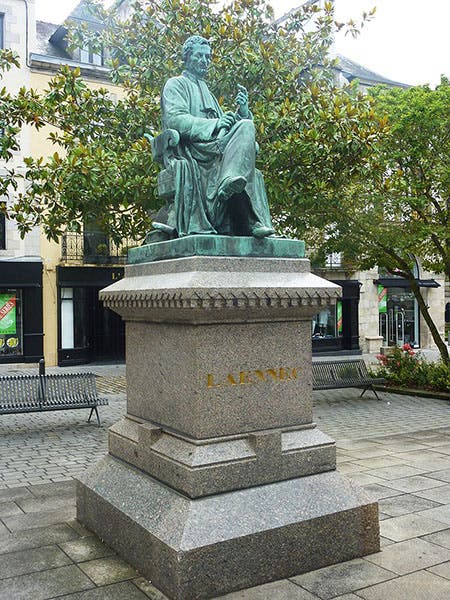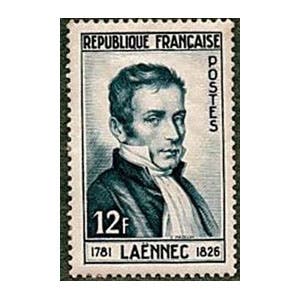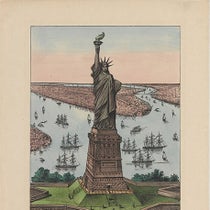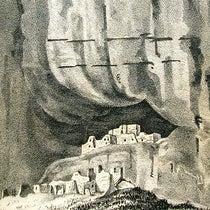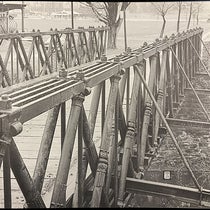Scientist of the Day - René-Théophile-Hyacinthe Laennec
René-Théophile-Hyacinthe Laennec, a French physician, was born Feb. 17, 1781. In 1816, Laennec was treating a young woman for heart problems. Most French physicians at that time recognized the importance of both percussion – tapping the chest with one's fingers – and auscultation – listening to the beat of the heart and the sound of the valves by laying one's ear on the chest. In this particular case, since the woman was obese, percussion was useless, and it seemed inappropriate to put his ear to her chest, given the patient's age and gender. So Laennec thought of rolling up a piece of paper into a tube and placing one end to his ear and the other on the patient's chest. He found this worked remarkably well, much better than direct auscultation.
Soon afterward, Laennec fashioned a hollow listening tube out of wood, which he used regularly in his rounds. He called it a stethoscope, from the Greek words for chest and examination. In 1819, he published a book describing the many uses of his device, De l’auscultation médiate ou Traité du diagnostic des maladies de poumon et du coeur (On Indirect Auscultation, or Treatise on Diagnosing Diseases of the Lung and Heart). The book was extremely influential and was translated into English and other languages. Stethoscopes were soon an indispensable tool for the physician. The more familiar binaural flexible stethoscope was invented in the 1850s, but historians recognize the importance of Laennec’s invention in getting the process started.
There is an original wooden stethoscope, made by or for Laennec in the 1820s, in the Science Museum, London, which is especially nice, because not only does the museum have 16 excellent photos on their website (see our first and third images), but the instrument comes with an inscription by an early owner, written on paper and wrapped around the barrel: "This is one of Laennec's original stethoscopes, and it was presented by him to Dr Bégin a French Army surgeon whose widow gave it to me in 1863."
Laennec became a professor of medicine at the Collège de France in 1823. Alas, his career was cut drastically short by tuberculosis, which killed him in 1826. He was 45 years old.
There seems to be just the one printed portrait of Laennec (second image), but I do not know where it first appeared. There is a statue of Laennec in a square in Quimper, in Brittany, where he was born (fourth image); he holds a bronze stethoscope in his bronze right hand, and a bronze copy of his book leans against his chair. In 1952, France issued a postage stamp in Laennec’s honor, with, curiously, no stethoscope in sight (fifth image).
Dr. William B. Ashworth, Jr., Consultant for the History of Science, Linda Hall Library and Associate Professor emeritus, Department of History, University of Missouri-Kansas City. Comments or corrections are welcome; please direct to ashworthw@umkc.edu.

